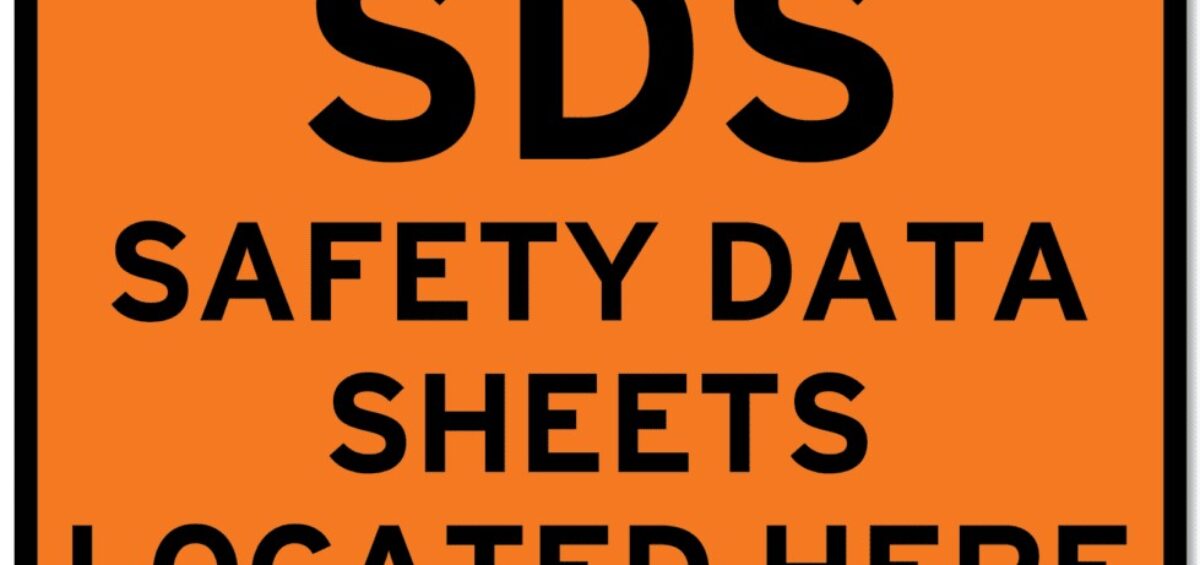Safety Data Sheets for Hazardous Substances:
Model Work Heath and Safety Regulations (Australia).
Are you are a Manufacturer or Importer of chemicals that are supplied to workplaces?
If so, the legislation under the Model Work Health and Safety Regulations requires you to determine whether the chemical is hazardous and to correctly classify it, according to the 3rd or 7th Revised Edition of the GHS (GHS 3 or GHS 7).
The Hazardous Chemical Information System (HCIS) on the Safe Work Australia website allows Manufacturers and Importers to search for the hazards and exposure standards for hazardous chemicals. It’s important to note that not all chemicals are listed on the database. Therefore, a search that returns no results does not necessarily mean that the chemical is non-hazardous.
The Manufacturer or Importer of a hazardous substance is obligated under the Workplace Health and Safety Act to prepare and provide SDS’s (Safety Data Sheets) that comply with the Model Code of Practice: Preparation of safety data sheets for hazardous chemicals.
When Do I Need to Do This?
It’s important to note that not all chemicals are listed on the database. Therefore, a search that returns no results does not necessarily mean that the chemical is non-hazardous.
If you manufacture or import chemicals, you are responsible for making a correct Safety Data Sheet for each hazardous chemical.
The Safety Data Sheet (SDS) must be prepared before first manufacturing or importing the hazardous chemical. If that is not practicable, as soon as practicable after first manufacturing or importing the hazardous chemical and before first supplying it to a workplace.
Who Should Write the Safety Data Sheet (SDS)?
A SDS prepared by an overseas manufacturer may be used, only if it meets all of the requirements of the Workplace Health and Safety Act. A SDS prepared for an overseas market is unlikely to include all of the information specific to the use of the hazardous chemical in Australia. The importer will need to prepare an Australian compliant SDS.
The person writing the Safety Data Sheet should have appropriate expertise and have access to the product formulation and information on its correct hazard classification. GHS sets the classification criteria for substances and mixtures.
How Often Should Safety Data Sheets be Updated?
The SDS must be amended whenever necessary to keep ensure the information is current and correct. The SDS must be reviewed and reissued at least once every five years.
Legislation Requirements from 31 December 2022
Australia has now adopted Globally Harmonized System of Classification and Labelling of Chemicals GHS version 7. A two-year transition period began on 1 January 2021 and ended on 31 December 2022. All SDS must now use GHS version 7 classifications.
A supplier of hazardous substances to a workplace must provide a compliant SDS:
- The first time the hazardous substance is supplied to the workplace.
- The first time the hazardous substance is supplied to a workplace after the SDS is amended.
- When requested by anyone in the workplace, who may be affected by the hazardous chemical.
Every business must keep an inventory of all hazardous substances used, handled manufactured or stored at the workplace. Hazardous substances include a wide range of products, such as petrol, solvents, industrial chemicals, fireworks, agrichemicals, household cleaners, flammable aerosol cans and cosmetics. There are often far more hazardous substances on site than people realise.
The current SDS must be readily available to each worker, emergency service worker, or anyone else, who might be exposed to the substance. The information on the SDS is used to determine what controls the business must have in place to manage the substance and protect workers.
Common Issues with Safety Data Sheets
While working with clients to ensure their hazardous substance inventories are up to date, Produco consultants have found several common issues with SDS including:
- SDS out of date
- No Australian contact information
- Incorrect hazard classifications
Produco has the knowledge to guide manufacturers and importers through a review of their SDS, and show businesses how to correctly create and maintain their hazardous substance inventories. Contact Produco here.


